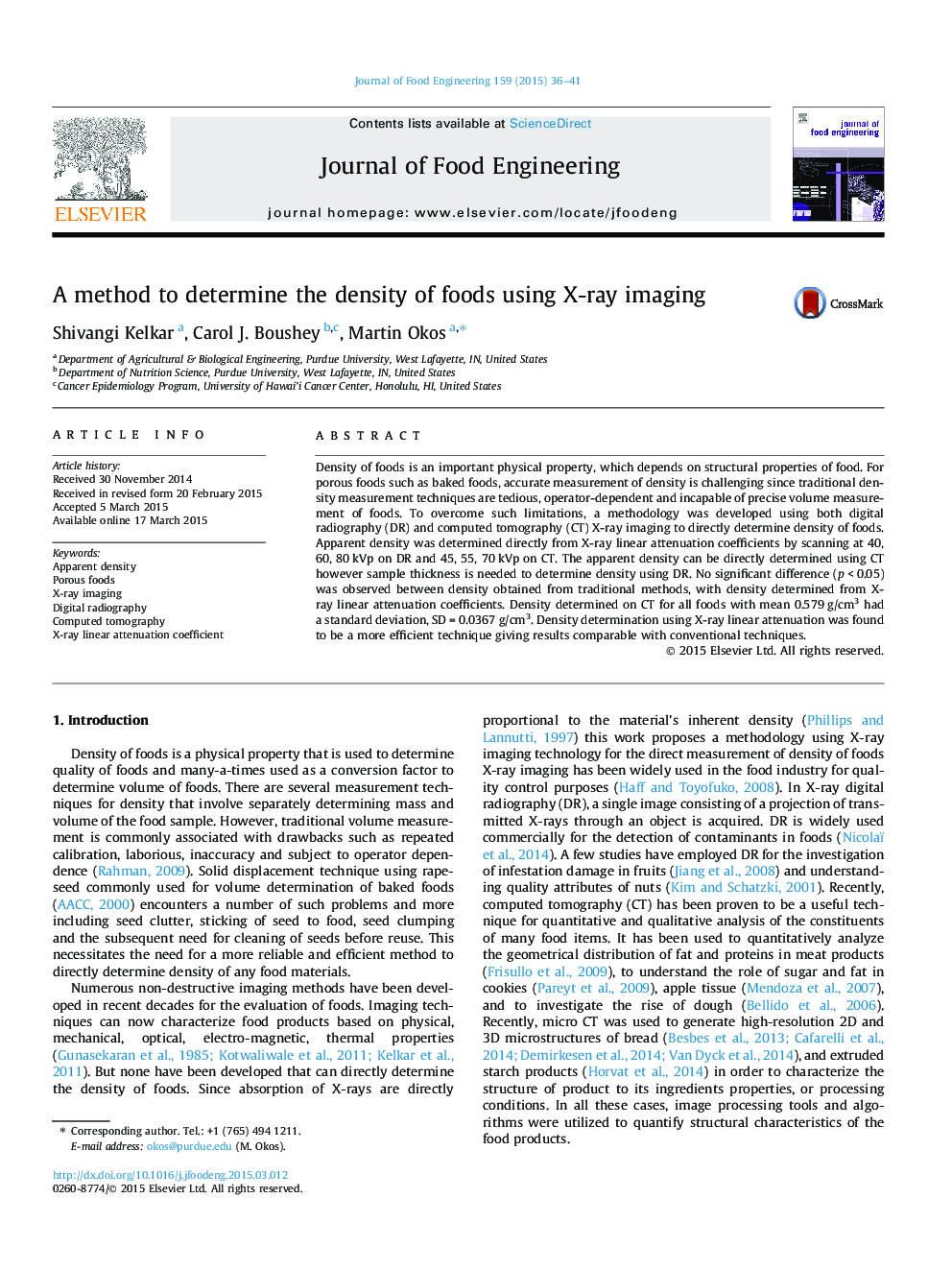| Article ID | Journal | Published Year | Pages | File Type |
|---|---|---|---|---|
| 6665369 | Journal of Food Engineering | 2015 | 6 Pages |
Abstract
Density of foods is an important physical property, which depends on structural properties of food. For porous foods such as baked foods, accurate measurement of density is challenging since traditional density measurement techniques are tedious, operator-dependent and incapable of precise volume measurement of foods. To overcome such limitations, a methodology was developed using both digital radiography (DR) and computed tomography (CT) X-ray imaging to directly determine density of foods. Apparent density was determined directly from X-ray linear attenuation coefficients by scanning at 40, 60, 80 kVp on DR and 45, 55, 70 kVp on CT. The apparent density can be directly determined using CT however sample thickness is needed to determine density using DR. No significant difference (p < 0.05) was observed between density obtained from traditional methods, with density determined from X-ray linear attenuation coefficients. Density determined on CT for all foods with mean 0.579 g/cm3 had a standard deviation, SD = 0.0367 g/cm3. Density determination using X-ray linear attenuation was found to be a more efficient technique giving results comparable with conventional techniques.
Related Topics
Physical Sciences and Engineering
Chemical Engineering
Chemical Engineering (General)
Authors
Shivangi Kelkar, Carol J. Boushey, Martin Okos,
